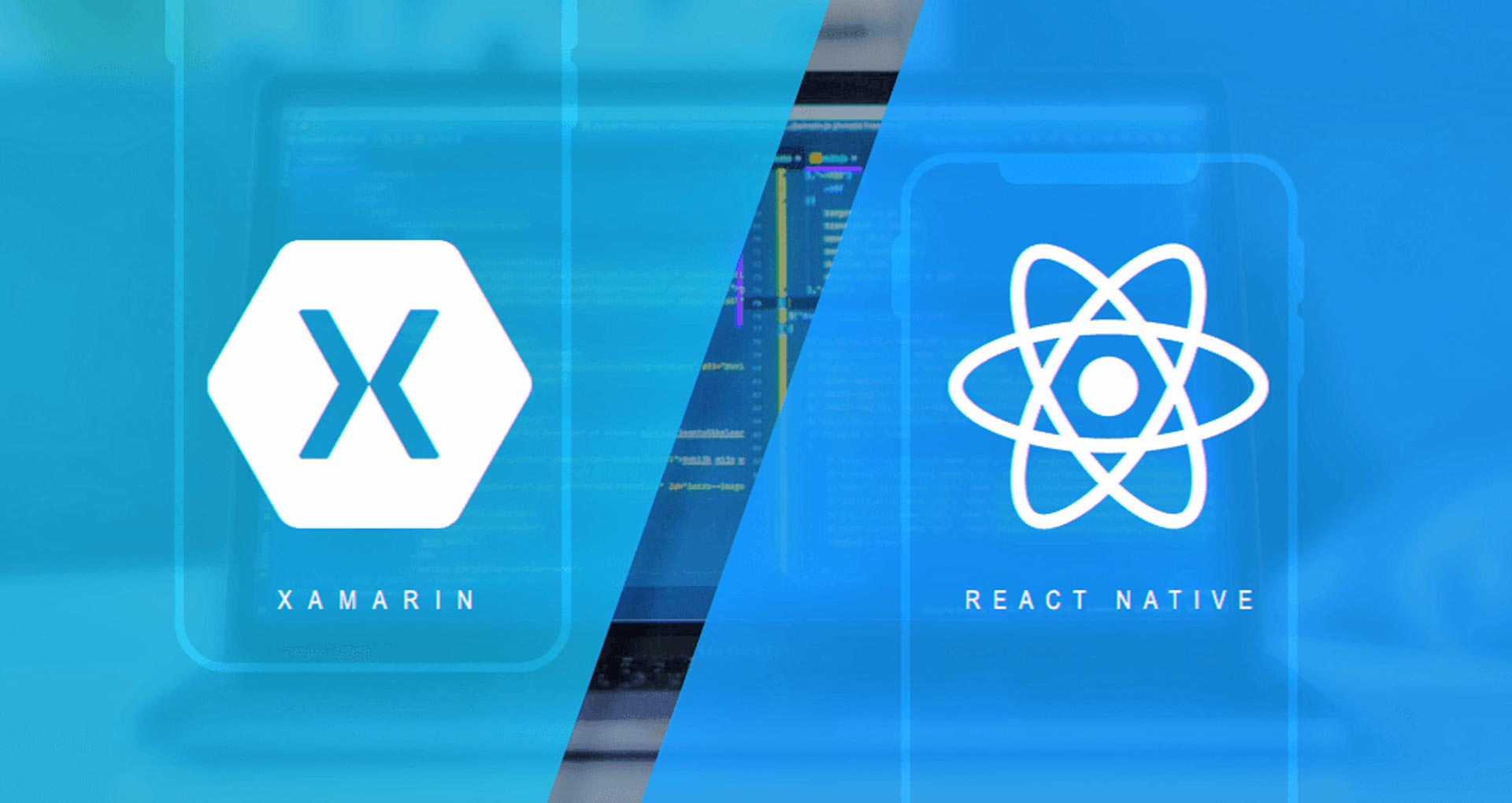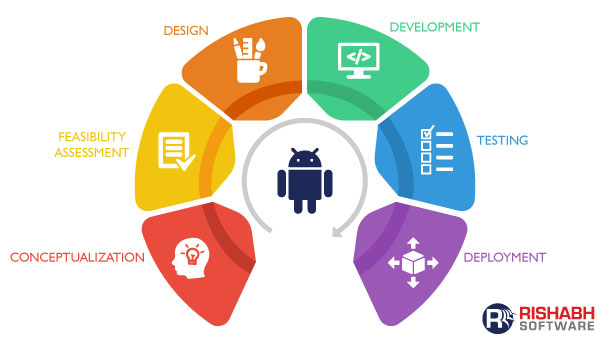The world of mobile app development has some great tools that support enterprises and startups in their digital journeys. Among these frameworks, Xamarin and React Native have traditionally been the top choices for developers. However, with Xamarin’s end of support, the community is shifting toward .NET MAUI, which offers a more modern, cohesive approach to cross-platform app development. React Native remains a reliable option, particularly for applications emphasizing reactive development.
Meanwhile, the growing prominence of .NET MAUI suggests a broader industry move toward a unified and future-proof framework. In this comparison, we’ll explore Xamarin and React Native to help you make the right decision for your next project.
What is Xamarin?
Xamarin, an open-source mobile app development framework using .NET platforms as a base. It helps businesses build robust and high-performing cross-platform apps for Android and iOS. Founded in 2011, today, Xamarin is a very popular framework that is based on the Microsoft technology stack with a continuously growing developer community. If you need enterprise solutions that enable power-packed mobility, Xamarin is your answer to building thoughtful & purpose-driven apps.
Let’s look at how we have leveraged Xamarin to help some of our global clients achieve efficiency & enhance CX. These use cases will help you understand how this cross-platform framework supports the development of robust mobile apps.
Mobile Money Transfer App Development
Here’s an example of how we enabled a European digital enterprise to simplify its process of global transactions. Our team was tasked to create a robust and comprehensive custom money transaction platform that would ease currency distribution and facilitate instant fund transfers in just a few taps. The centrally-hosted payment app which is easy to use & has an intuitive interface resulted in:
- 100% transparency and traceability of transactions
- 5X increase in operational efficiency
- Highest customer satisfaction
Real-Time Gas Cylinder Distribution System
A French gas giant wanted to optimize its supply chain network and gain more control over their stock levels. We developed a robust gas cylinder distribution tracking app that would help in efficiently managing the movement of cylinders and vehicles between the plant & refilling depots. The developed solution resulted in:
- 40% faster delivery process
- 30% increase in the service line of cylinders
- 4X increase in driver proficiency to manage multiple orders
Xamarin – Yay or Nay?
Let us look at some pros and cons of this pioneering technology.
| Pros | Cons |
| Seamless User Experience: Xamarin.Forms take advantage of standard interface elements with a library of templates that help in reusing the code across platforms. | Delays in updates: The new features and updates create delays & take a while before they are reflected in the Xamarin tools. This may result in lags within the apps. |
| Performance: Well-known for delivering native-like performance levels | Heavy Graphics: Xamarin works best when there is a simple UI. However, for complex apps like mobile games at many levels there is a need to write platform-specific code. |
| Development Ecosystem: .Net, C# and Microsoft Visual Studio along with Xamarin can help you create robust cross-platform apps | OS-specific Limitations: Dynamic code generation isn’t supported for iOS development. Further, there is no remoting & runtime features aren’t enabled. For Android development, there is no Java code generation support. |
What Is React Native?
React Native is also a popular open-source cross-platform framework that uses JavaScript and React, along with native platform capabilities to develop applications. It essentially helps in writing apps that deliver the performance, look & feel of a native app. Whether you are a startup, SME, or a large enterprise, react native app development can help you stay on top of your game & future-proof your business through intuitive & engaging apps.
Let’s look at a recent case to help you understand how we leveraged React Native to help a major client develop a custom mobile app.
Robust Online Ticket Reservation System
A New Zealand-based client approached us to develop an event ticket-booking platform that would help with complete control over the reservation function while managing the end-to-end booking process. Rishabh Software developed a highly efficient & easy-to-use ticketing app that would accept online reservations and remotely manage bookings for activities, events & tours. The comprehensive solution, thus, provides real-time user information, ensures a secure booking process and has in-built reporting and analytics on ticket details. The developed solution resulted in:
- 10,000+ user bookings at any peak time
- 60% increase in ticket bookings
- 0 duplicate bookings
React Native – Hot or Not?
Let’s look at the positives and negatives of this popular mobile development technology.
| Pros | Cons |
| User Interface: The native UI components give the app a native look & feel | Navigation: The app navigation isn’t as seamless as that of a native app |
| Ready-made Components: The massive library of UI components results in faster development time | UI: It does not support the development of complex animation & transitions |
| Platform-Specific Code: It helps with further optimizing separate native apps with native code |
Successful Mobile Apps that use Xamarin and React Native
Here’s a glance of the companies that use either:
React Native:
- Bloomberg: Equity Trading and Analytics App
- Facebook: Social Media Platform
- Uber Eats: Food Delivery App
- Airbnb: Vacation Rental App
- Salesforce: Customer Relationship Management Platform
Xamarin:
- Just Giving: Online Fundraising Platform
- Storyo: Storytelling Video Maker App
- The World Bank: Survey Conducting App
- FreshDirect: Online Food & Grocery
- APX: Environmental Asset Tracker App
Xamarin or React Native: Which One to Pick and beyond?
Through the following pointers, we will look at the key differences between both. It will help organizations like you decide which cross-platform frameworks make the most sense for your business.
React Native vs Xamarin Market Share
Going by Google Trends for the US region, React Native has gained significant traction over the last year.

Xamarin vs React Native Performance
Both Xamarin and React Native deliver near-native performance. However, Xamarin runs the fastest code on iOS and Android, along with a user interface for native tools.
React Native vs Xamarin Components
React Native includes partly adaptive and pre-built components like text inputs and buttons. However, these components are not all that adaptive. And thus, if you need to build a more advanced app, you may need to recompose these built-in components. Xamarin.Forms has an entire cross-platform UI toolkit with native UI components that work across both platforms. Xamarin.iOS and Xamarin.Android also help with custom app UI and powerful performance.
Quick React Native vs Xamarin Comparison
| Type | Xamarin | React Native | Winner |
| User Experience | Can customize app elements & components for both iOS and Android. It also uses native SDKs and APIs for UX enhancement | It provides ready-to-use UI kits that include React Virgin and Shoutem to create native UI components |
Xamarin |
| Performance | Runs the fastest code on both iOS and Android | Delivers near-native performance |
Xamarin |
| Application Architecture | Supports architecture patterns like Business Façade, MVVM, MVC, Async, Singleton and Provide. | Its architecture has four components – React, Bridge, JSC and Native Side | Both |
| Compilation | Xamarin offers a compiler that suits both Android and iOS | It uses Just in Time (JIT) compilation that only works for Android and not for iOS, which may affect the performance of iOS apps. |
Xamarin |
| Development Environment | With Xamarin.Forms, Xamarin.Android and Xamarin.iOS, platform-specific native UI components can be built | The pre-built components in React Native supercharge performance. It also has the live reload feature |
Xamarin |
Closing Words
React Native continues is a powerhouse in the realm of cross-platform development. With its flexible architecture and a rich ecosystem, it’s perfect for building high-performance apps. Its reactive nature specifically appeals to developers who prioritize rapid iteration and community-driven development. Having said that, .NET MAUI is quickly gaining ground as an amazing alternative to Xamarin, particularly for those rooted in the .NET ecosystem. As a more modern and future-proof option, .NET MAUI offers broader multi-platform support. These features make it an excellent choice for long-term development strategies. While React Native remains a top contender, it’s totally worth keeping an eye on .NET MAUI as you take the next leap in your app development
As an experienced cross-platform development company, Rishabh Software has the know-how to map these parameters for your business and offer the optimal app development solution.











 30 Min
30 Min


